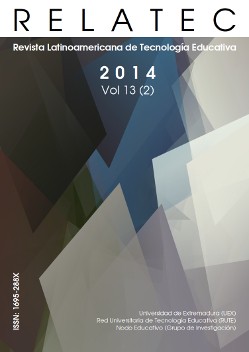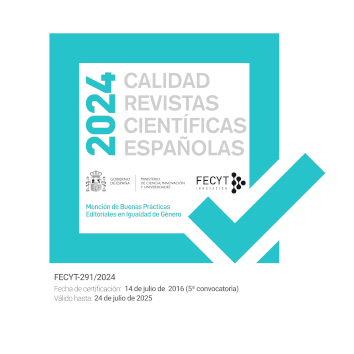Xbox360-Kinect: herramienta tecnológica aplicada para el desarrollo de habilidades matemáticas básicas, en alumnos de segundo grado de educación básica / XBox360-Kinect: Applying a technology-based approach to support the development of basic math skills
DOI:
https://doi.org/10.17398/1695-288X.13.2.103Keywords:
Tecnología, Juegos educativos, Matemáticas, Habilidad, DesarrolloAbstract
Este artículo comparte los resultados de una investigación que exploró el uso de la consola de juego Xbox360-Kinect y del videojuego Body and Brain Connection en un entorno educativo en México para fomentar el desarrollo de las habilidades de suma y resta en alumnos de 2º grado. La investigación siguió un enfoque cuantitativo con un diseño cuasi experimental, en el que los participantes en el grupo experimental recibieron un tratamiento que consistió en cuatro distintas modalidades de juego del videojuego Body and Brain Connection para la consola de juego Xbox360-Kinect; en contraste, el grupo de control no fue expuesto al videojuego. El impacto del tratamiento experimental sobre las habilidades básicas de los alumnos se valoró mediante la aplicación de las sub-pruebas de suma y resta de la prueba Comprehensive Mathematical Abilities Test (CMAT). Los datos recolectados mostraron un impacto positivo, en diferente magnitud y grado, a la luz del género de los participantes como variable de análisis. Además, los alumnos con los menores puntajes en los pre-tests de suma y resta resultaron ser los más beneficiados por el tratamiento experimental. Se concluye que el uso de esta tecnología educativa promueve el desarrollo de las habilidades de suma y resta, constituyéndose como una herramienta formativa, activa, innovadora y significativa para la mejora de las habilidades matemáticas básicas de los alumnos.
Abstract
This article shares the findings of a study that explored the use of the Xbox360-Kinect game console and the Body and Brain Connection videogame in an educational setting in Mexico to support 2nd grade students in the development of addition and subtraction skills. The study followed a quantitative approach with a quasi- experimental design where participants in the experimental group received a treatment consisting in four different play modalities of the Body and Brain Connection videogame for the Xbox360-Kinect game console; the control group, in contrast, was not exposed to the videogame. Impact of the experimental treatment on basic math skills was measured through the addition and subtraction subtests in the Comprehensive Mathematical Abilities Test (CMAT). Data collected shows a positive impact, in different magnitude and extent, when the participants’ gender is used as an analysis variable. Furthermore, students with the lowest scores in the addition and subtraction pre-tests benefited the most from the treatment. Overall, it is concluded that the use of this educational technology supports the development of addition and subtraction skills, representing a formative, active, innovative, and meaningful tool that allows students improve their basic math skills.
Downloads
Downloads
Published
Issue
Section
License
Authors who publish in this journal accept the following conditions:
1. The Author retains copyright in the article. Upon acceptance of the article, the author shall grant to the Publisher the right of first publication of the article. with the dcoument registered with the Creative Commons Attribution-NonCommercial-NoDerivative 4.0 International (CC BY-NC-ND) license, which allows to third parties to use what is published whenever they mention the authorship of the work and the first publication in this journal.
2. Authors can make other independent and additional contractual agreements for the non-exclusive distribution of the article published in this journal (eg, include it in an institutional repository or publish it in a book) provided they clearly indicate that the work was published for the first time in this journal.
3. Authors are allowed and recommended to publish their work on the Internet (for example on institutional or personal pages) before and during the review and publication process, as it can lead to productive exchanges and a greater and faster diffusion of published work (see The Effect of Open Access).









